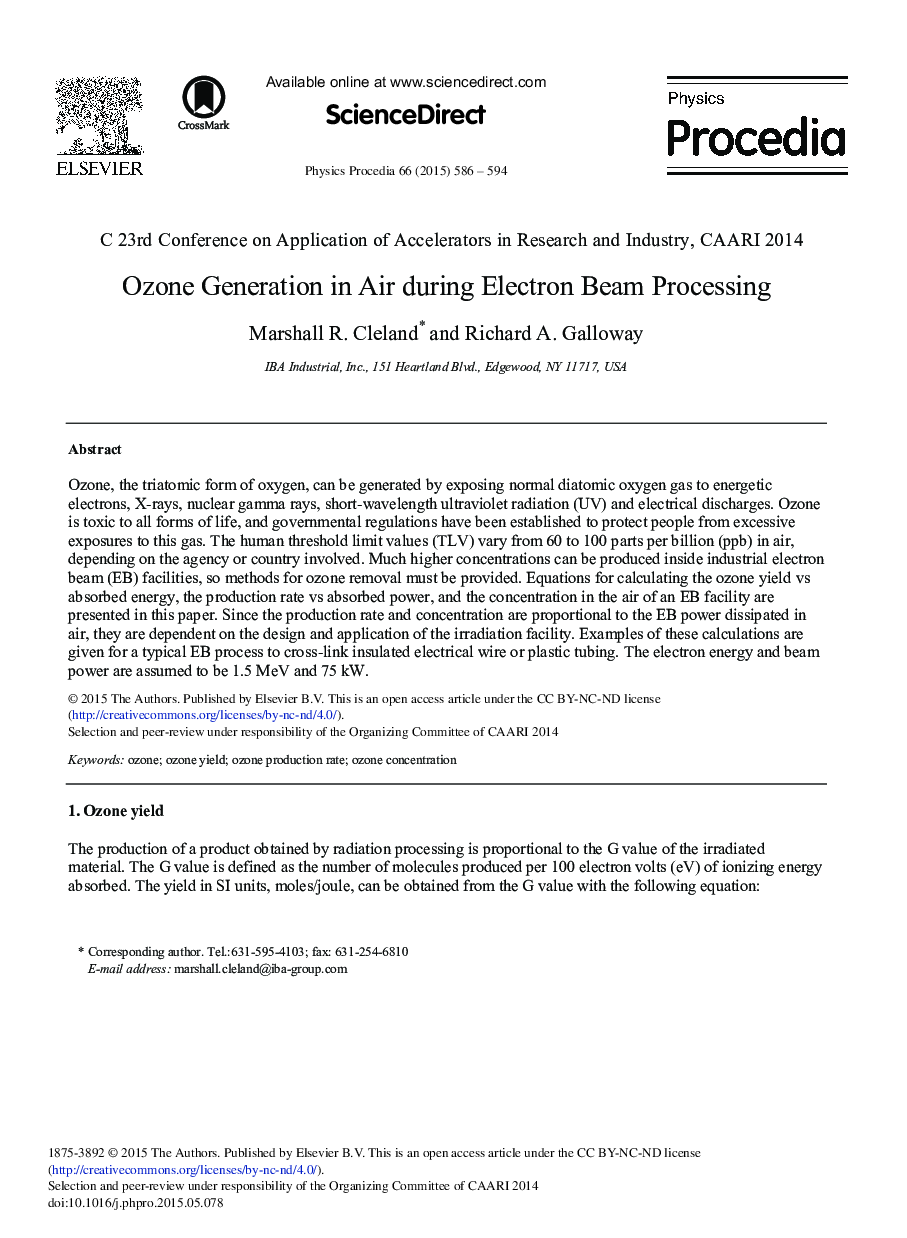| Article ID | Journal | Published Year | Pages | File Type |
|---|---|---|---|---|
| 1870099 | Physics Procedia | 2015 | 9 Pages |
Abstract
Ozone, the triatomic form of oxygen, can be generated by exposing normal diatomic oxygen gas to energetic electrons, X-rays, nuclear gamma rays, short-wavelength ultraviolet radiation (UV) and electrical discharges. Ozone is toxic to all forms of life, and governmental regulations have been established to protect people from excessive exposures to this gas. The human threshold limit values (TLV) vary from 60 to 100 parts per billion (ppb) in air, depending on the agency or country involved. Much higher concentrations can be produced inside industrial electron beam (EB) facilities, so methods for ozone removal must be provided. Equations for calculating the ozone yield vs absorbed energy, the production rate vs absorbed power, and the concentration in the air of an EB facility are presented in this paper. Since the production rate and concentration are proportional to the EB power dissipated in air, they are dependent on the design and application of the irradiation facility. Examples of these calculations are given for a typical EB process to cross-link insulated electrical wire or plastic tubing. The electron energy and beam power are assumed to be 1.5 MeV and 75Â kW.
Related Topics
Physical Sciences and Engineering
Physics and Astronomy
Physics and Astronomy (General)
Authors
Marshall R. Cleland, Richard A. Galloway,
